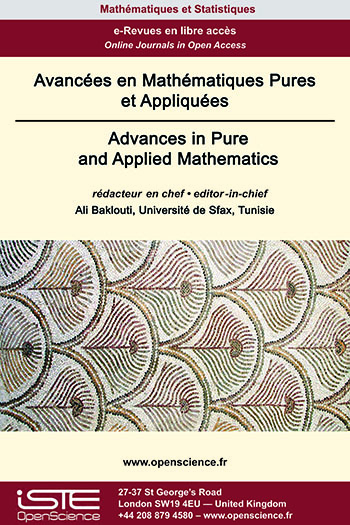

Mathematics > Home > Advances in Pure and Applied Mathematics > Issue
Let $$$f$$$ be a degree $$$d$$$ form in $$$n+1$$$ variables $$$x_0,\dots ,x_n$$$. Any additive decomposition of $$$f$$$ is associated to a finite set $$$A\subset ℙ^n$$$ with $$$\#A$$$ the number of non-proportional addenda. We study the index of regularity $$$\rho(A)$$$ of $$$A$$$, i.e. the first integer $$$t$$$ such that $$$h^1(\mathcal{I}_A(t)) = 0$$$, of the finite subset $$$A\subset ℙ^n$$$ associated to the additive decompositions of degree $$$d$$$ forms in $$$n+1$$$ variables. Obviously $$$\rho(A)\le d$$$. We prove that $$$\rho(A)\ge d-k$$$ if $$$A$$$ spans $$$ℙ^n$$$ and $$$k$$$ is the maximal integer such that $$$x_0^k$$$ divides at least one monomial of $$$f$$$. If $$$f$$$ essentially depends on less variables, but $$$A$$$ spans $$$ℙ^n$$$, then $$$\rho(A)=d$$$. We give examples (but with $$$\#A$$$ bigger that the rank of $$$f$$$) in which we have $$$\rho(A)=d$$$.
In this paper, we reconsider and slightly generalize various classes of Weyl almost automorphic functions ([29], [33]). More precisely, we consider here various classes of metrically Weyl almost automorphic functions of the form $$$F : {\mathbb R}^{n} \times X \rightarrow Y$$$ and metrically Weyl almost automorphic sequences of the form $$$F : {\mathbb Z}^{n} \times X \rightarrow Y$$$, where $$$X$$$ and $$$Y$$$ are complex Banach spaces. The main structural characterizations for the introduced classes of metrically Weyl almost automorphic functions and sequences are established. In addition to the above, we provide several illustrative examples, useful remarks and applications of the theoretical results.
This paper complements the description of finite-dimensional Jordan symplectic metric superalgebras on algebraically closed fields of characteristic zero. We discuss the graduation of the metric and the symplectic structures and use a new type of generalized double extension by two-dimensional Jordan superalgebras.

2025
Volume 25- 16
Issue 1 (January 2025)2024
Volume 24- 15
Issue 1 (January 2024)2023
Volume 23- 14
Issue 1 (January 2023)2022
Volume 22- 13
Issue 1 (January 2022)2021
Volume 21- 12
Issue 3 (Special AUS-ICMS 2020)2020
Volume 20- 11
Issue 1 (May 2020)